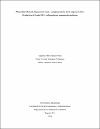Planeación tributaria impuesto de renta y complementarios de la empresa Activos Productivos SAS año 2019 – tributación en contratos de usufructo
Resumen
El estudio de caso se realizó para la empresa Activos Productivos SAS, con la finalidad de dar una propuesta de planeación tributaria frente al impuesto de renta y complementarios teniendo en cuenta su condición especial, la cual consiste en la entrega de bienes mediante usufructo por parte de sus accionistas dentro de la constitución de la sociedad, lo anterior genera incertidumbre al gobierno corporativo de la organización y a la revisoría fiscal en cuanto a cómo se debían declarar estos bienes inmuebles en el impuesto tanto para el usufructuario como para el nudo propietario. Para cumplir con el objetivo planteado se utilizan los pasos establecidos por Leda Stott y Xosé Ramil en el año 2014 para el desarrollo de estudios de caso y José Orlando Mera en el año 2012 para realizar una planeación tributaria, los cuales permitieron tener un acercamiento amplio a la compañía y a su información financiera y tributaria, además de brindar las pautas para desarrollar una propuesta de planeación tributaria adecuada.
Finalmente, se logra realizar las proyecciones necesarias y como resultado final se obtiene la proyección del impuesto de renta y complementarios para el año gravable 2019, fundamentando el anterior estudio en la información analizada y mediante la normatividad y doctrina emitida por la dirección de impuestos y aduanas nacionales DIAN, específicamente en el concepto 070314 de septiembre 29 de 2005, donde aclara como debe ser el manejo fiscal de los bienes entregados en usufructo, tanto para los accionistas o nudos propietarios como para la compañía en este caso el usufructuario.
Abstract
The case study was carried out for the company Activos Productivos SAS, with the proposal of giving a tax planning proposal against income tax and complementary taking into account its special condition, the quality consisting of the delivery of goods through usufruct by its shareholders within the constitution of the company, the foregoing creates uncertainty to the corporate governance of the organization and the tax auditor's office as to how these real estate assets should be declared in the tax for both the usufructuary and the owner knot. To meet the stated objective, the steps established by Leda Stott and Xosé Ramil will be used in 2014 for the development of case studies and José Orlando Mera in 2012 to carry out tax planning, which allowed for a broad approach to the company and its financial and tax information, in addition to providing guidelines to develop a proposal for proper tax planning.
Finally, the necessary projections are made and as a final result the income tax and complementary tax projection for the taxable year 2019 is obtained, basing the previous study on the analyzed information and through the regulations and doctrine issued by the tax and customs management national DIAN, specifically in the concept 070314 of September 29, 2005, where it clarifies how the fiscal management of the goods delivered in usufruct should be, both for shareholders or proprietary nodes and for the company in this case the usufructuary.
Palabras clave
Collections
 This work is licensed under a Creative Commons Reconocimiento-NoComercial 4.0.
This work is licensed under a Creative Commons Reconocimiento-NoComercial 4.0.

